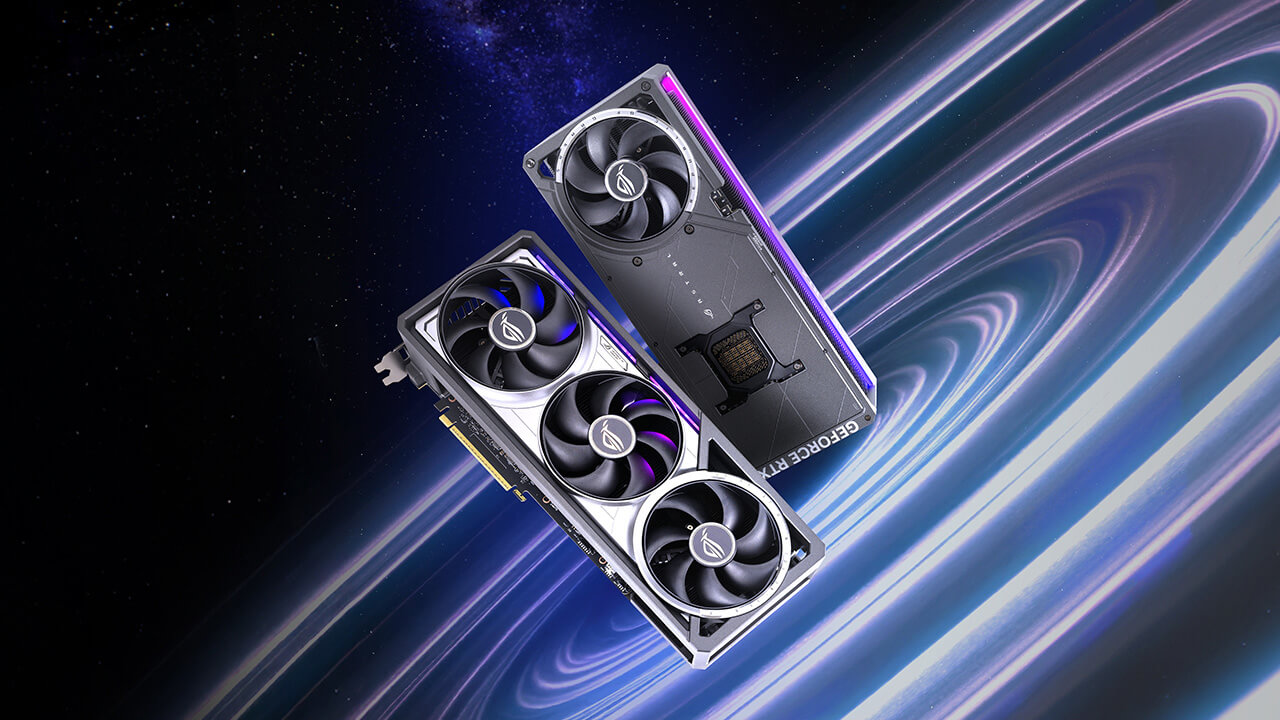GPU's built-in gyro & accelerometer tell you if the card isn't level — ROG Astral GPU battles card sag with software-monitored feature

Asus’s flagship GPU line, the ROG Astral, recently received a new feature called Equipment Installation Check that allowed users to check if their expensive graphics card is still securely attached to their motherboard. Reviewers missed this feature because it wasn’t available at launch, but we spotted it being discussed on Reddit earlier in the month, and Uniko's Hardware (machine translation) subsequently looked more closely at the feature - which arrived via the GPU Tweak utility after a recent update.
The ROG Astral uses a Bosch Sensortec BMI323 Inertial Measurement Unit (IMU) chip, which allows it to detect any changes in its position. Because of this, the GPU Tweak utility can then detect any changes to your graphics card’s position, helping you prevent GPU sagging. This is especially important as this premium GPU weighs around 3 kg — heavier than a standard red clay brick.
Many manufacturers have started introducing reinforced PCIe slots to help prevent these heavy add-in boards from damaging their premium motherboards. Despite that, it’s still often not enough to support the stresses these lengthy GPUs put on such a small area, leading to long-term mechanical strain. Most hefty GPUs come with a support bracket in the box to address this issue, while a few other companies introduced screw holes on the other side of the graphics card that secures them to compatible VGA holders. You can also get a generic bracket, which are widely available online.
Despite these solutions, there’s still a chance that a support bracket might slip or loosen over time. That’s why the Equipment Installation Check is crucial, as it warns you if that happens. After all, most users rarely move their desktop PCs, meaning any changes in the GPU’s position are likely unwanted. That way, if you get a warning, and you do not remember touching your tower case recently, then it’s a sign that you need to physically check your PC (and maybe even dust it while you’re at it). It might also tell you if someone tampered with your desktop without your knowledge.
This, alongside other features like Power Detector+, which measures power distribution on the 12V cables, and Thermal Map, which uses temperature sensors strategically placed around the GPU’s board to monitor hotspots, is likely one of the reasons why the Asus ROG Astral is such a heavy and expensive GPU. All of these might be too much for some users, but if you dropped around $3,000 or more for an RTX 5090 GPU, you likely want to get every protection for your four-digit investment.
Follow Tom's Hardware on Google News to get our up-to-date news, analysis, and reviews in your feeds. Make sure to click the Follow button.
Get Tom's Hardware's best news and in-depth reviews, straight to your inbox.

Jowi Morales is a tech enthusiast with years of experience working in the industry. He’s been writing with several tech publications since 2021, where he’s been interested in tech hardware and consumer electronics.
-
CelicaGT The slot PCIe interface, GPU mounting and power deliver need a rethink. Slot in cards, going back to the original IBM PC ('81) were meant to be mounted a horizontal motherboard, not vertical. Nor were 3kg 35cm+ 600W monstrosities foreseen when the tower form factor became the de facto enthusiast PC standard. Unfortunately there is over 40 years of momentum behind the slot in card form factor. It will take some bandaid ripping to abandon it.Reply
(Edit: Words, meaning, coffee) -
Konomi Asus should implement these sensors in humans too, as sagging is a common occurrence as we age.Reply -
CelicaGT Reply
Don't I know it.Konomi said:Asus should implement these sensors in humans too, as sagging is a common occurrence as we age. -
drivinfast247 Maybe they should implement a sensor that monitors if the GPU power cable is melting.Reply -
CelicaGT As an aside, laptop GPU's have had this functionality for a while now. If moved, the GPU will preemptively clock down, reducing power consumption. The best explanation I got was to protect the system in case the mains power is suddenly disconnected. Most batteries cannot supply enough amperage to supply some dGPU's in full swing. It makes sense, but it's also annoying if you ever use a lap desk for gaming.Reply -
usertests Reply
"Easy" fixes include using motherboards horizontally, you can definitely find such cases on the market, mounting the card using a vertical bracket and riser cable, using APUs instead of discrete graphics, or using more modest graphics cards. As we progress through to 3D nodes in a decade or two, maybe power consumption will be forced back down. Maybe not.CelicaGT said:The slot PCIe interface, GPU mounting and power deliver need a rethink. Slot in cards, going back to the original IBM PC ('81) were meant to be mounted a horizontal motherboard, not vertical. Nor were 3kg 35cm+ 600W monstrosities foreseen when the tower form factor became the de facto enthusiast PC standard. Unfortunately there is over 40 years of momentum behind the slot in card form factor. It will take some bandaid ripping to abandon it.
Maybe there's something ready to displace PCIe that could be taken from enterprise products? But even CXL uses PCIe. -
thestryker Reply
While I know this is just nvidia aimed snark, deservedly so, the Astral cards do have per pin power monitoring and will alert you if the amperage is beyond safe limits (software based and I believe hwinfo added the sensors as well if one didn't want to use Asus software).drivinfast247 said:Maybe they should implement a sensor that monitors if the GPU power cable is melting. -
CelicaGT Reply
Agreed on all fronts. In regards to creating a new "Universal Modular GPU" standard I believe it would be quite difficult and expensive, probably doing away with the slot mount altogether. The thermal solution would be the most difficult to deal with, slot mounting, for all its downsides, allows a lot of room for large heatsinks and fans. Even while they impede internal case airflow (easily dealt with).usertests said:"Easy" fixes include using motherboards horizontally, you can definitely find such cases on the market, mounting the card using a vertical bracket and riser cable, using APUs instead of discrete graphics, or using more modest graphics cards. As we progress through to 3D nodes in a decade or two, maybe power consumption will be forced back down. Maybe not.
Maybe there's something ready to displace PCIe that could be taken from enterprise products? But even CXL uses PCIe.
I am a very deductive person (I am a professional diagnostician, I even get paid do do it) and not very creative generally (excluding sarcastic quips), thus I struggle to visualize completely what any proper solution might look like. Just some random ideas that solve specific problems whilst probably introducing several more hehe! -
edzieba The big problems you will run up against in changing the slot architecture for GPUs (or any other AIC) is cost. Card-edge connectors are extremely cheap (on the AIC side, almost free as you need a host PCB anyway). Connectors with sufficient bandwidth for PCIe have very much nonzero BoM cost, and you need to not just eat that cost yourself, but also convince every motherboard manufacturer to eat that cost too. It's the same reason we're stuck with 12V as the ATX standard rather than switching to 48VDC (as used on DC hardware) and cutting current to a quarter for the same power - you need to convince a lot of different involved parties to spend more money to produce the same result.Reply
As for this 'sag detector': an IMU is a crude proxy, better would be to add strain gauges to the PCB itself and monitor board warp directly regardless of orientation. Might be cheaper, or at least a wash in terms of BoM cost (eliminate the IMU, might need to add a precision voltage meter if you do not have enough channels left on the chip already measuring supply voltages). -
jp7189 SXM is already a thing and doesn't have a sagging problem. There are versions that can power and cool 700W. Will that eventually trickle down to us mere mortals? Only time will tell.Reply